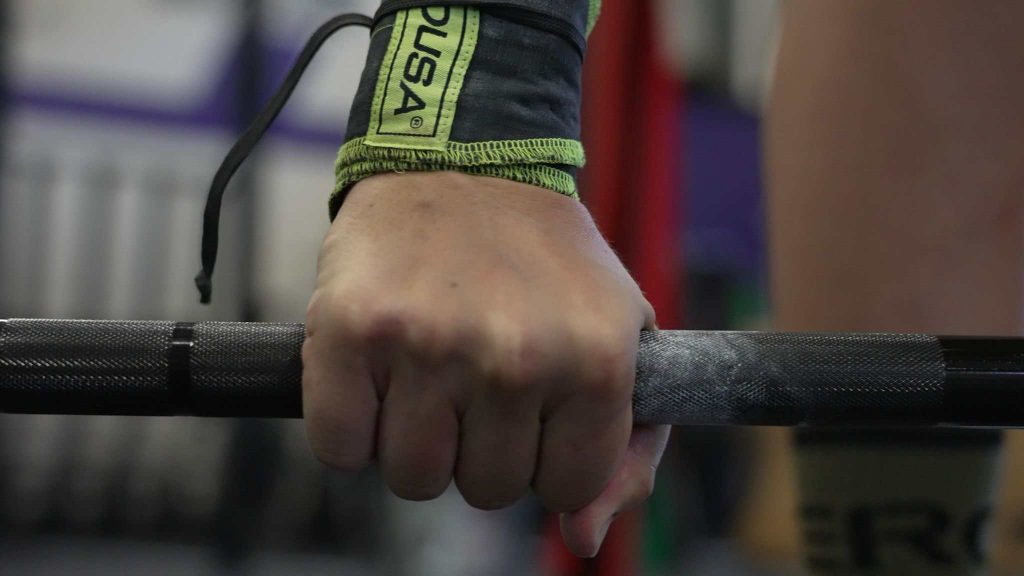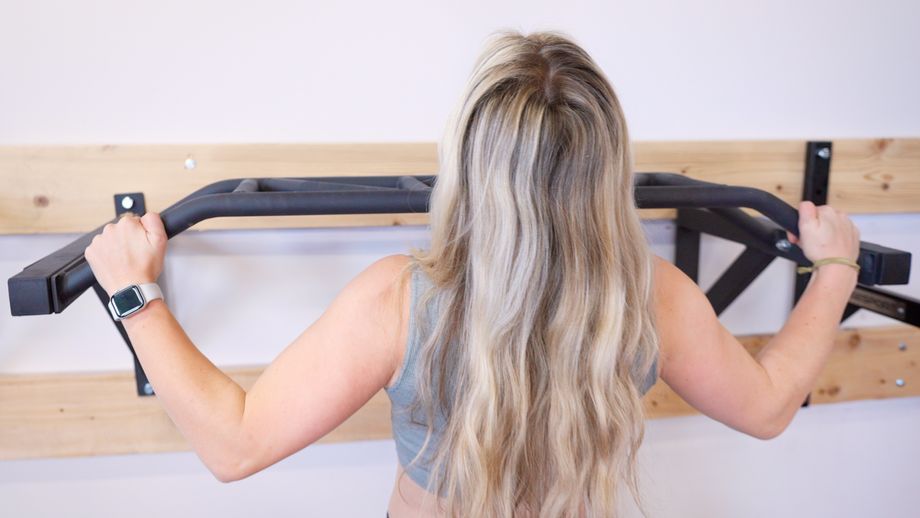Qalo rings aren’t the only things that decorate the hands of CrossFit athletes. Calluses, cracks, rips, and blisters do, too. But while the former is stylish, the latter is painful! That’s why we put together this CrossFit hand care guide.
Ahead, learn more about the most common CrossFit hand issues and exactly how to treat and prevent them.
Common CrossFit Hand Care Issues And How To Treat Them
Let’s take a look at the four most common skin and hand issues in CrossFit: oversized calluses, rips (also called tears), blisters, and cracked skin.
Oversized Calluses
While a callus itself may not be considered a true injury, it can quickly turn into one. And we’re inclined to say that oversized calluses are the most common cause of CrossFit hand injuries.
Calluses are as contentious a topic in the CrossFit community as CrossFit itself to the general public—some people love ‘em and think they’re functional; others think they gotta go ASAP.
As far as calluses go, the truth is somewhere in the middle.
Calluses are actually a physiological response to trauma. When you traumatize the skin on your hands through repetitive friction and pressure (pull-ups, barbell cycling, etc), the top layer of skin naturally begins to thicken.
This thicker layer of skin is less likely to rip, tear, or crack than the baby-soft skin beneath.
For that reason, it’s negligent to remove your calluses completely. However, that doesn’t mean you should do absolutely nothing when calluses appear. We’ll talk more about this in the section on preventing CrossFit hand injuries, but it’s important to keep calluses under control.
Blisters (and Blood Blisters)
Blisters are like calluses in that they are caused from excess friction, pressure, or pinching of the skin.
However, while calluses serve a protective role, blisters are more of an oopsie. Blisters have no long-term benefit.
In case you were wondering, the fluid inside blisters is typically blood, serum, or a combination of the two. If yours fills up all red, black, or purple, that’s a blood blister.
Cracked Skin
Cracked skin is common for all types of fitness fanatics. Runners get it when they hit the pavement in the cold, swimmers get it from the chlorine, and CrossFit athletes get it from… chalk.
The reason there are so many chalk monsters in our sport is that chalk helps absorb slippery palm sweat, and therefore makes it easier to hold onto the bar and barbell.
But because chalk excels at absorbing moisture, it can be drying. And dry hands crack. While mildly dry hands are no big deal, if your hands get too dry, they can split and even bleed.
How to Prevent CrossFit Hand Injuries
Hand injuries may seem like an inevitable consequence of being in love with CrossFit. But actually, CrossFit hand injuries are avoidable. Really!
Ahead, a few tips for preventing these palm pains.
Pay Attention To Grip
If you’re ripping a lot, the issue could be that you’re holding your dumbbell, kettlebell, barbell, or pull-up bar in the wrong part of your hand.
Ask a trainer or coach to take a look at how you’re holding onto the device. They may suggest that you alter your grip such that the bar is higher or lower in your palm.
Moisturize
When it comes to cracked skin, moisturizing is essential. Ideally, you’d moisturize before your hands start to crack. Keeping the skin on them hydrated can help prevent them from cracking in the first place.
So, consider incorporating moisturizer into your bedtime routine ASAP. Truthfully, any lotion will do the trick as long as it doesn’t irritate your skin.
But if your hands are more cracked than my heart after watching “Dear John,” you might invest in something a little more hardcore such as:
- W.O.D Welder HandCream For Athletes
- Beam The Fixer Salve
- RipFix Hand Repair Cream
- Burt’s Bees Hand Salve
How To Care For A Callus
If you spend a lot of time on the pull-up bar, you’d be wise to smooth your calluses out. Why? Because jagged edges make the callus more susceptible to rips.
The easiest way to smooth a callus is to use a pumice stone on your palms in the shower. Some athletes opt for a CrossFit-specific callus shaver, like the RAW WODROD on Rogue Fitness or the SandBar on Amazon.
Wait a few minutes for the heat of the shower to help soften the excess skin on your hands. Then, grab your pumice stone, which you can buy from basically any retailer or your local drugstore. Rub the pumice stone in small circles over your hand until your callus is sculpted to perfection. Picasso!
Afterward, you might grab the moisturizer. But you should skip this step if you’re planning to workout in the next few hours as the cream can interfere with your ability to grip the bar.
Note: We don’t recommend the roughin’-it route, AKA using razor blades and/or sandpaper to care for calluses. While this method was popular in the CrossFit olden days, there’s just too much room for error.
How To Care For A Blister
As tempting as it may be to pop the blister like a pimple, try to fight the urge.
Actually, most blisters don’t have to be popped. Most blisters will naturally deflate and heal on their own within a week.
If, however, you plan to continue exercising with a blister, you’ll want to take a sterilized needle to puncture the bubble and let the fluid drain out. This way you can control exactly how the blister pops. Otherwise, you risk the blister going splat in the middle of your workout and turning into a full rip. Messy.
Once the blister has popped, wipe it with a sanitizing solution to prevent infection. Then, wrap it with an adhesive to protect it while it heals.
If you’re consistently plagued by blisters, it’s worth asking a trainer to take a look at your grip. Sometimes people get blisters on their hands because they are holding the bar with the wrong part of their palms and/or fingers.
How To Care For Cracked Skin
Moisturize, moisturize, and moisturize some more. You might even consider wearing gloves with moisturizer in them to bed every night.
If you already have cracks you don’t want to worsen, try keeping the crack moisturized with Vaseline. Transparently, Vaseline will make it impossible to grip onto the barbell or rig. So just be sure that you’re not oiling up your palms too soon before a WOD.
Working Around CrossFit Hand Care Injuries

As you read above, exactly how you choose to treat your hand issue will vary from affliction to affliction.
But no matter what hand care issue you’re navigating, it’s important to take your time returning to exercises that could further traumatize the area.
Patience, young grasshopper, patience.
Mild rips and blisters will take anywhere from three to seven days to heal in full. But more severe wounds can take weeks—plural.
Reduce the chances of mild rips becoming major ones by avoiding grip-intensive exercises as long as you can.
Don’t worry, so long as you scale the movements appropriately, your workouts won’t be ruined!
Rather than toes-to-bar, for example, you might do V-ups or GHD sit-ups.
Another option is to substitute kipping variations for strict variations. Kipping pull-ups, for instance, have a much higher risk of leading to hand injury than strict pull-ups. Ditto goes for ring muscle-ups and toes-to-bar.
Final Thoughts

Calluses and other hand injuries may seem like an inevitable side effect of the sport. Some people even wear them proudly as a badge of honor. But actually, if you actively take care of your hands, you can prevent things like oversized calluses, blisters, and rips from happening in the first place.
FAQs
What do CrossFit athletes wear on their hands?
Most CrossFit athletes elect to wear gymnastics grips on their hands while doing pull-ups, toes-to-bar, bar-muscle-ups, and chest-to-bar.
These grips function as a buffer between your palm and the bar, which reduces risk of friction-induced injury.
CrossFit athletes also commonly wear tape on their fingers and thumbs to protect the part of their hand not covered by grips. For instance, many athletes wrap tape around their thumb to protect the delicate skin while they hook grip.
How do you wrap ripped hands in CrossFit?
There are different ways to wrap and cover your hand wound, depending on where it is and how big it is.
In general, you want to layer protective gear and adhesive.
If you have a tear on your palm for instance, you should cover the wound with antibacterial ointment and a bandaid. Then, layer tapes over that area for extra protection.
You can try putting gymnastics grips over all of that. But most people find the pressure of a barbell or bar against the wound deeply uncomfortable!
If, however, you have a wound on your finger, you’d want to wrap your finger with a Band-Aid and then wrap some sticky tape around that for protection.
Should I wear grips for CrossFit?
Yes! Effective at protecting your hands from undue friction, there’s really no reason not to try CrossFit grips. And if you don’t like grips, you can always make your own from tape.
What kind of grips does Mat Fraser wear?
Mat Fraser is a man of many talents… and a man of many different kinds of grips. During his time as the reigning champ, he has reportedly used both Rogue Fitness and Bear Komplex gymnastics grips.
How do you protect your hands in CrossFit?
By following all of our hand care tips above, including shaving callus build-up, moisturizing dry hands, and laying off the high-rep pull-up WODs until your skin is fresh and healed. CrossFit hand care kits such as the RIPT Skin System, can serve as your one-stop shop for torn hands.